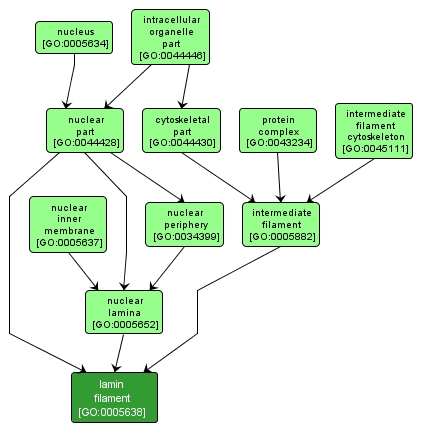GO TERM SUMMARY
|
| Name: |
lamin filament |
| Acc: |
GO:0005638 |
| Aspect: |
Cellular Component |
| Desc: |
Any of a group of intermediate-filament proteins that form the fibrous matrix on the inner surface of the nuclear envelope. They are classified as lamins A, B and C. |
Synonyms:
- type V intermediate filament
|
|

|
INTERACTIVE GO GRAPH
|














